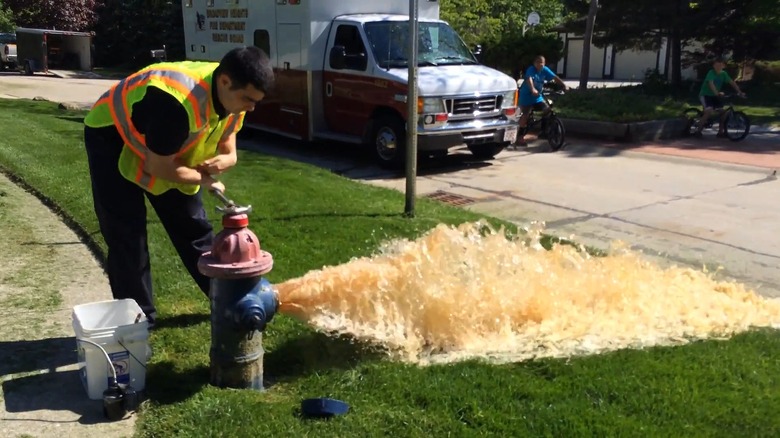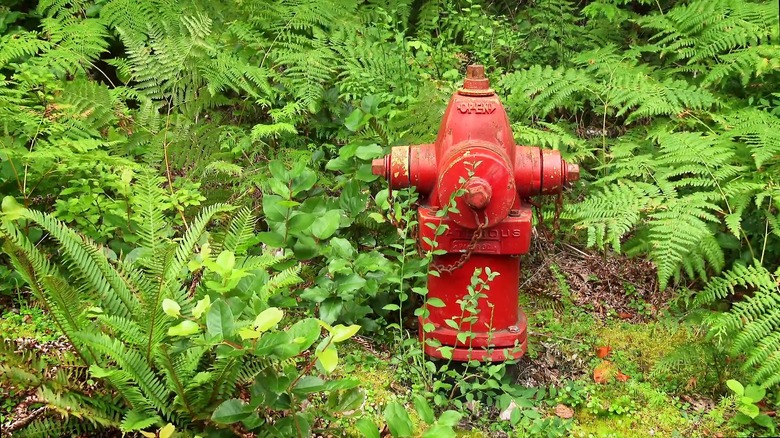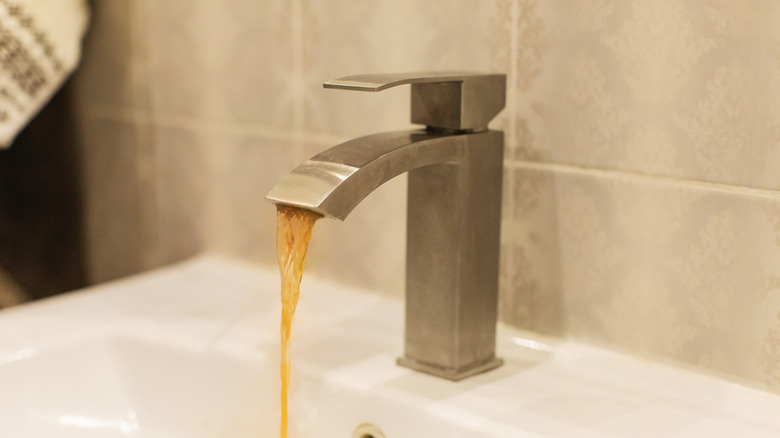The Reason Why Firefighters Release Dirty Water From A Fire Hydrant Before Using It
Fire hydrants have been around for about 180 years and have dramatically enhanced firefighting capabilities. They have become so prevalent that he only time many people notice them is when they are being flushed. In fact, you may not have ever considered it before, but these common roadside fixtures come in a variety of shades, and the fire hydrant colors indicate important information for firefighters.
The fire department routinely approaches the hydrants in their area and releases water onto the street that often looks discolored or dirty. This task is done so that firefighters can measure how much water is flowing out, which is vital to how effective the department can be in combating out-of-control flames. If the water is exhibiting a poor flow rate, it could be due to a burst pipe that may have gone unchecked otherwise. Low-pressure water out of a fire hydrant could also indicate an insufficient supply of water, which would be disastrous during an emergency.
The water department also flushes fire hydrants
While firefighters are most concerned with a hydrant's ability to provide enough water to extinguish a building fire, the water department is looking at other factors, like water quality. Stagnant water isn't healthy, especially to drink, because it can contain microorganisms and sediment, among other undesirable things. The pipes that feed a fire hydrant need to be flushed to remove standing water underneath the street. This stagnant H2O may not be properly disinfected, develop an odor, and have a bad taste.
When fire hydrants are flushed, it gets the water moving again, and encourages sediment, rust and other chemicals that shouldn't be there out of the pipes. While the system does produce clean water, many have still found reasons to invest in a reverse osmosis water filtration system for their home. Nevertheless, the water department workers identify strategic places where a flush will provide the most benefit to raise and maintain water quality levels.
During a fire hydrant flush your tap water might turn brown
While it's certainly not a pleasant thought, your home's water could turn brown when the fire or water department is conducting a flush. Unfortunately, all the sediment in the pipes doesn't just flow out onto the road, but can also flow out of your tap. While the hydrants are gradually opened up during a flush to prevent too much sediment from getting released all at once, it can still temporarily affect your tap.
Fortunately, other than a brief, unpalatable sight at the kitchen or bathroom faucet, the discoloration will clear up after a few minutes of running the water. It's important to remember that the U.S. offers some of the world's cleanest drinking water, with Yale University's Environmental Performance Index in 2024 ranking America 15th out of 180 in sanitation and drinking water, with a score of 96.2 out of 100. So, if authorities are conducting a fire hydrant flush in your area, it's actually helping to improve the quality of your drinking water.


